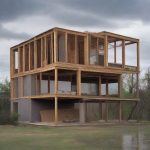Imagine stepping out of your urban apartment onto a lush oasis of greenery, with plants and flowers blooming all around you, birds chirping, and the gentle rustle of leaves in the breeze. That’s the magic of a green roof – a sustainable and environmentally friendly way to transform your rooftop into a vibrant living space. In this guide, we’ll explore the step-by-step process of building a green roof, from planning and design to installation and maintenance.
Understanding Green Roofs
Before we dive into the nitty-gritty of building a green roof, let’s first understand what exactly it is. A green roof, also known as a living roof or eco-roof, is a vegetative layer grown on top of a building’s roof. It consists of a waterproofing membrane, a root barrier, a drainage system, and a growing medium in which plants can thrive. Green roofs offer a myriad of benefits, including:
- Improved Insulation: Green roofs provide natural insulation, reducing heat loss in the winter and heat gain in the summer, thus lowering energy costs.
- Stormwater Management: They absorb and retain rainwater, reducing runoff and alleviating pressure on stormwater drainage systems.
- Urban Heat Island Mitigation: By absorbing heat and releasing moisture through evapotranspiration, green roofs help mitigate the urban heat island effect, keeping cities cooler.
- Biodiversity and Habitat Creation: Green roofs create habitat for birds, insects, and other wildlife, promoting biodiversity in urban areas.
- Aesthetic Enhancement: They add beauty and greenery to urban landscapes, creating visually appealing spaces for relaxation and recreation.
Now that we understand the benefits, let’s explore how to build your very own green roof.
Planning and Design
Like any construction project, building a green roof begins with careful planning and design. Here are the key steps to consider:
- Structural Assessment: Before adding the extra weight of a green roof, it’s crucial to ensure that your building’s structure can support it. Consult with a structural engineer to assess load-bearing capacity.
- Regulatory Compliance: Check local building codes, zoning regulations, and environmental permits to ensure compliance with green roof requirements.
- Site Analysis: Evaluate the rooftop’s orientation, sunlight exposure, and wind patterns to determine the best location for your green roof and the types of plants that will thrive.
- Design Considerations: Decide on the type of green roof system (intensive, extensive, or semi-intensive) based on your goals, budget, and maintenance capabilities.
By taking these factors into account during the planning phase, you can ensure a successful green roof project that meets your needs and objectives.
Installation Process
Once you’ve completed the planning and design phase, it’s time to roll up your sleeves and start building your green roof. Here’s a step-by-step overview of the installation process:
- Prepare the Roof Surface: Clean the roof surface of debris and repair any existing leaks or damage. Install a waterproofing membrane to protect the building from water infiltration.
- Install Drainage and Root Barrier: Lay down a drainage layer to facilitate water runoff and prevent waterlogging. Install a root barrier to prevent plant roots from penetrating the roof membrane.
- Add Growing Medium: Spread a lightweight, well-draining growing medium (such as lightweight soil or a mix of compost and perlite) evenly across the roof surface to support plant growth.
- Select and Plant Vegetation: Choose a variety of drought-tolerant, low-maintenance plants suited to your climate and rooftop conditions. Plant them in the growing medium, leaving adequate space for growth.
- Water and Fertilize: Water newly planted green roofs regularly to establish root systems and provide nutrients. Fertilize as needed to promote healthy plant growth.
Throughout the installation process, it’s essential to follow best practices and safety guidelines to ensure the longevity and stability of your green roof.
Maintenance and Care
Once your green roof is installed, regular maintenance is key to keeping it healthy and vibrant. Here are some maintenance tasks to include in your routine:
- Watering: Monitor soil moisture levels and water as needed, especially during hot, dry periods.
- Weeding: Remove weeds and unwanted vegetation to prevent them from competing with your green roof plants for water and nutrients.
- Pruning: Trim back overgrown vegetation to maintain a neat and tidy appearance and prevent overcrowding.
- Fertilizing: Apply organic fertilizer or compost as needed to replenish nutrients and promote healthy plant growth.
- Inspection: Regularly inspect the roof for signs of damage, leaks, or pest infestations, and address any issues promptly to prevent further damage.
By staying proactive and attentive to your green roof’s needs, you can ensure it remains a thriving green oasis for years to come.
Conclusion
Building a green roof is not only a sustainable and eco


